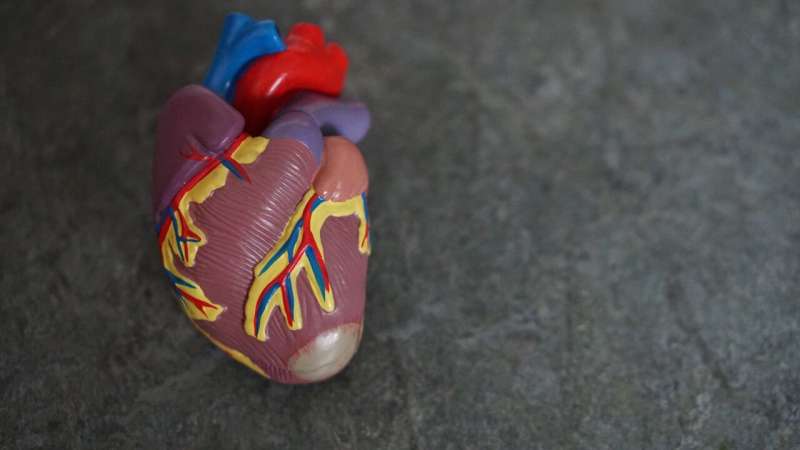
Female recipients of a left ventricular assist device tend (LVAD) to have worse clinical outcomes compared to their male counterparts, according to a study in Circulation: Heart Failure from researchers at the University of Alabama at Birmingham Marnix E. Heersink School of Medicine.
“Patients who develop end-stage heart failure have two advanced heart failure therapies available to them: a heart transplant or LVAD implantation,” said Naman Shetty, M.D., the first author of this manuscript and a research fellow in the Division of Cardiovascular Disease.
“LVADs are specialized devices that help pump blood from the heart to the rest of the body. They can be implanted as a permanent treatment for end-stage heart failure or as a bridging therapy until a heart transplant is available. With the limited availability of hearts for transplantation, a large proportion of end-stage heart failure patients rely on LVADs for treatment.”
In the current study, the authors conducted a comprehensive analysis to assess the sex differences in the clinical outcomes of LVAD recipients within known clinical (race and ethnicity) and social (device strategy and implantation center volume) subgroups.
Researchers analyzed results based on three subgroups: race and ethnicity (non-Hispanic white, non-Hispanic Black, non-Hispanic Asian and Hispanic); device strategy (permanent use of the device, bridge to transplant or bridge to transplant candidacy); and implantation center volume, or the number of implants performed at each specific center each year.
Shetty and his team used the Interagency Registry for Mechanically Assisted Circulatory Support, a nationwide registry of LVAD recipients housed at UAB. The INTERMACS allowed researchers to study the outcomes in end-stage heart failure patients who received an LVAD. The investigators analyzed clinical outcomes including death, heart transplantation and adverse events, e.g., bleeding, infection, rehospitalization, after LVAD implantation in about 20,000 LVAD recipients.
Although heart failure deaths are equal across sex, researchers found that, among end-stage heart failure patients implanted with an LVAD, women had a higher risk of mortality, lower likelihood of heart transplantation, and higher rate of adverse events across the subgroups of race, implantation center volume and device strategy compared with their male counterparts.
“These sex-associated differences in clinical outcomes persist on stratification by race, device strategy or implantation center,” said Pankaj Arora, M.D., the senior author of the paper and an associate professor in the Division of Cardiovascular Disease.
Arora notes that other factors such as social support contribute to these differences in clinical outcomes.
“Heart failure is a disease where the patient relies on caregivers for the maintenance of self-care, psychological support and navigating the health care system,” Arora said. “However, about 75 percent of the caregivers are women. With women assuming the role of caregiving, they are less likely to receive care when they require it.”
Apart from social support, Arora says other possible explanations for the higher mortality in women could be the higher likelihood of frailty and the higher rate of adverse events observed in the study. The lower likelihood of heart transplantation in women could be attributed to the higher prevalence of antibodies that increase the risk of transplant rejection.
“This comprehensive nationwide study draws attention to the sex-associated disparities in the clinical outcomes of end-stage heart failure patients implanted with an LVAD,” Arora said. “Based on the findings from this study, it is necessary to develop standardized objective methods to allocate advanced heart failure therapies. Furthermore, this study highlights the need to shift the focus from treatment to prevention of progression to end-stage heart failure by optimizing medical therapy for heart failure.”
Anna Jones, University of Alabama at Birmingham

